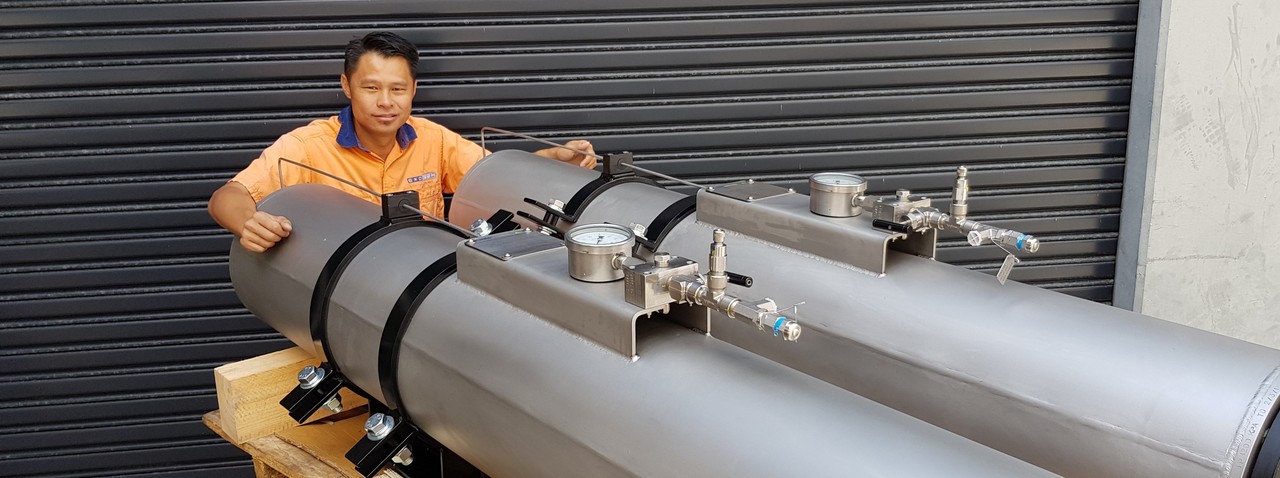
Surge Alleviators
The function of a surge alleviator is to remove hydraulic line shock, or water hammer, as it is commonly known. Where water hammer occurs, the pressure within the line will rise suddenly resulting in broken pipelines, leaking joints and damaged gauges.
Pump Shutdown
Upon pump shutdown, the flow of fluid continues along the pipeline creating the possibility of column separation. After stopping, the fluid column will attempt to run back down the pipeline into the check valve causing damaging shock pressures.
An Exotech alleviator installed in the downstream side of the check valve will, on sensing any decrease in pressure due to column separation, force stored fluid back in.
Pump Startup
On pump start up fluid between the pump and check valve is forced against the valve which is held shut by the pipeline static head condition. Surge pressure greater than the pump shut off thereafter can be generated.
With an Exotech alleviator installed on that leg, the pump discharge is initially accepted and the pressure is allowed to rise gradually allowing time for frictional and static head condition to be overcome.
Valve Closure
As a valve is closed a pressure wave is generated that propagates at the speed of sound along the column of fluid until it reaches the originating pump. The wave is then reflected back to the valve, causing increased line pressure of as much as 100%, resulting in blown out pumps, seals weakened pipe fittings and possible burst pipes.
By installing an Exotech alleviator adjacent to the valve, the quick rise in pressure is cushioned by the compression of the gas and flow is controlled, thus stabilising the system.
Exotech Fluid Management is licensed by Australian Made Campaign Limited to use the Australian Made, Australian Grown logo on its products in accordance with the AMAG Logo Code Of Practice.



